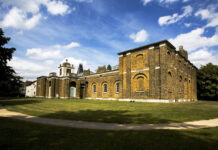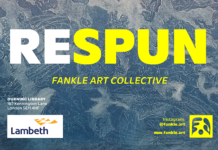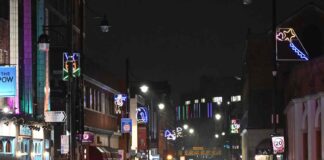Brixton is a busy place – full of people, noise and activity. But local artist Adrian Coleman has found an extraordinary stillness and calm amongst the bustle. He paints ordinary street scenes and domestic buildings. But his is a rare and special take on the streets we all know.
It is as if a stranger has landed, taken a long hard look at Brixton, reproduced a series of beautiful images, and then moved on.
His work is a beguiling mix of intimacy and detachment. As we talk, the reasons for this become clear. The simple truth is that he is something of a stranger.
Adrian was born in Britain but moved to the USA when he was three. He started painting when he was seven and later studied art and architecture at Yale University. He returned to the UK three years ago and chose Brixton because of similarities with the area of Brooklyn he had lived in.
He explains that his art explores notions of identity and belonging, being both a part of and estranged from a place. This sense of not quite belonging gives his paintings an eerie, reflective quality capturing a less well known side of Brixton.
Some of his work can seem quite bleak – but as an observation rather than a judgement. He is inviting you to share his vision. And it’s a very interesting one.

The work is unashamedly urban and architectural – and painted with a very disciplined technique which perhaps reflects his training in architecture.
It falls into a number of time periods coinciding with where he was living. So most of his paintings are of America. Fascinating as these are, I want here to focus on his paintings of Brixton.
Nothing is obvious about these works – you need to look quite hard to get the full picture.
At a simple level they are delicate, very finely rendered celebrations of the everyday. More profoundly they create a sense of place which is different from most perceptions of Brixton. And sometimes there is a more complex narrative at work. For example in Station to Station, the painting becomes the site of intersecting stories between locals and those passing through. But they are subtle paintings as well – with hints and suggestions of urban alienation, deprivation and gentrification.
 He is also interested in how images of a place can reflect its history and character. So quite often yucca palm trees appear in his work as a neat way to show that Brixton is an immigrant community from different parts of the world.
He is also interested in how images of a place can reflect its history and character. So quite often yucca palm trees appear in his work as a neat way to show that Brixton is an immigrant community from different parts of the world.
Interestingly Adrian places his work in the tradition of English landscapes. Urban landscapes they may be, but there is a lot going on in these paintings. They invite you to savour the feel of Brixton and its textures and spaces. You can get lost in the loving and painstaking detail of the world as he sees it. And you come away with a sense that you’ve seen something new in your bit of London.
These are fine works by an interesting painter with much to say.
See more at http://www.colemanadrian.com
















